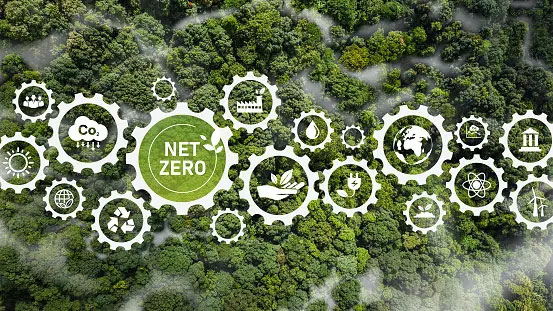Posted on 26 Apr 2024
Countries around the world are looking for ways to reduce carbon emissions to achieve carbon neutrality. Greenhouse gas in Southeast Asia is one of the lowest in the world. Southeast Asia’s share of global carbon emissions from 1990 to 2019 was less than 7%. However, between 2015 and 2040, carbon emissions per capita in Southeast Asia is expected to rise by 139%.1

Southeast Asia’s Green Economy
Southeast Asia has started implementing a green economy shift to encourage growth that is both climate-friendly and sustainable. The move towards green economy by 2030 offer an optimistic outlook for Southeast Asia. One can expect an increase in number of employment opportunities in the clean energy planning, building, operating, and maintenance sectors.2
Decarbonization in Southeast Asia
Southeast Asia has several decarbonization initiatives, including increasing fuel economy, switching to electric vehicles, and reducing investments in coal and other fossil fuels. By 2050, Vietnam, Malaysia, Laos, and Singapore are aiming to be carbon neutral.3
Decarbonization in Southeast Asia requires a significant growth in renewable energy.4 But the move towards decarbonization face challenges viz:-
Challenges
i. Reduction of Carbon Emission
Southeast Asia governments have set targets for reducing carbon emissions. However, the war between Russia and Ukraine has led to an imbalance in the global demand and supply of fossil fuels. Now, the oil market is now vulnerable due to the decrease in oil supply.5 As a consequence, the targets may be impacted.
ii. Limited Access to Financial Resources
Even for the prosperous Southeast Asian economies, financial resources are constrained because the budget for decarbonization is small in comparison to other nations.5
iii. Technical Capacity
It is difficult to support decarbonization efforts when technology is not used to achieve sustainable initiatives. The goal of being carbon neutral is further hampered by a lack of research and development (R&D) into new technologies and the viability of new technologies as well as the availability of key experts.5
iv. Agriculture
The movement of agricultural activities is hampered in less developed areas by inadequate infrastructure and extreme weather events brought on by climate change will regularly affect agriculture.6
v. Green Economy
Asia’s income in 2050 would be comparable to that of Europe today .7 If the region does not cut carbon emissions, research from Deloitte suggests that Southeast Asia would suffer over the next fifty years.8 Implementing green economy will allow access to electricity, new investments and 5 million new jobs.9
Climate Change
Southeast Asia is a strategic global player and an economic powerhouse. The progress is remarkable as income levels are rising, poverty is reducing, strong growth and consistent performance.10 In 2020, Southeast Asia accounted for 6.5% of world energy carbon dioxide emissions.11

Companies in Southeast Asia need to seize the opportunity to understand corporate risks, opportunities and set targets for decarbonization. In 2021, only 900 out of 4,000 Asian companies disclosed their emissions on net zero carbon commitment. Any Organization’s action on climate change must include coordination with other enterprises.
Now is the time for Asian enterprises to execute a big change that will bring about a positive impact for their businesses. Although the goal towards decarbonization is still in progress, Southeast Asia’s unique ideas on green activities will contribute to innovation and spur opportunities.

Source:- 1 fulcrum.sg, 2023
2 avpn.asia, 2021
3 edb.gov.sg, 2023
4 greennetwork.asia, 2023
5 iseas.edu.sg, 2023
6 adb.org, 2023
7 ADB, n.d
8 cnbc.com, 2021
9 bain.com, 2023
10 oecd.org, 2019
11asia.nikkei.com, 2023
Source:SEAISI